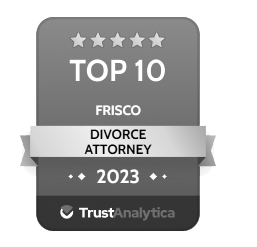When it comes to children and custody arrangements, there are certain things that parents inherently know must be figured out. For example, the possession schedule, child support, and medical support are obvious components to co-parent discussions. However, many parents don’t consider discussing who will get the right to claim a child as a dependent on their federal income tax return because they aren’t even aware of their options. The purpose of this article is to help provide an overview of the federal child dependency exemption.
The IRS only allows one parent to claim a child as a dependent in any given year. If both parents try to claim the child as a dependent, it will raise a red flag with the IRS and cause issues for the parents. According to federal tax law, a parent may claim a child as a dependent if that child is a “qualifying” child of the parent. Another way to say this is, the custodial parent is the one that has the right to claim the child. The IRS defines the “custodial” parent as the parent the child lived with the most during the year (overnight possession is what is counted).
In some situations, its very clear which parent is the “custodial” parent per the IRS guidelines. For example, if one parent has a standard possession schedule, that parent will have less than 50% of overnight possession during any given year. Therefore, he/she will NOT have the right to claim the child since his/her co-parent would be the “custodial” parent according to the IRS.
However, many parents have an equal possession schedule (i.e. 50/50 possession). In that situation, if both parents have the same amount of overnight possession during the year, who would be the “custodial” parent in the eyes of the IRS? Well, the IRS says that, in the event the parents have the same amount of possession during the year, the parent with the higher adjusted gross income would be the “custodial” parent and thus, have the right to child dependency exemption.
It’s important to note though, parents can agree for the “noncustodial” parent to claim the child on his/her taxes. Why would this ever occur? Well, let’s say the “custodial” parent does not have much taxable income compared to the “noncustodial” parent. The parties could agree to deviate from the IRS rules regarding which parent has the right to claim the child in order to maximize the tax benefits to help support the child. In other situations, parents may agree (often as part of the terms of a final settlement) to alternate claiming the child dependency exemption every-other-year. This way, both parents to reap the tax benefits.
If the parents decide to deviate from the IRS rules and allow the “noncustodial” parent to claim the child, IRS Form 8332 must be completed, signed by the “custodial” parent, and submitted with the “noncustodial” parent’s tax return. This way, the IRS is aware the “noncustodial” parent has been given the right to claim the child dependency exemption in that particular year.
Whenever it comes to claiming a child on your taxes, make sure you understand all the options that are available to you. In addition to discussing the situation with your tax professional, contact the attorneys at Grinke Stewart Law to help figure out what is best for your family.
Written by Dana J. Stewart

















